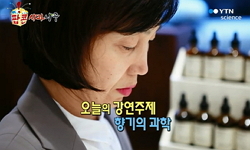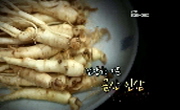본 연구는 차에서 느껴지는 폴리페놀의 수렴성으로 인하여 기호성이 떨어지는 문제점을 해결하기 위한 것으로서, 인삼(Panax ginseng)을 첨가해 숙성시켜 차 성분의 자극성과 수렴성 완화에 따...
http://chineseinput.net/에서 pinyin(병음)방식으로 중국어를 변환할 수 있습니다.
변환된 중국어를 복사하여 사용하시면 됩니다.
- 中文 을 입력하시려면 zhongwen을 입력하시고 space를누르시면됩니다.
- 北京 을 입력하시려면 beijing을 입력하시고 space를 누르시면 됩니다.

인삼 첨가에 따른 녹차의 성분 및 품질 변화 = Alterations in the Components and Quality of Green Tea Subsequent to Ginseng Supplementation
한글로보기https://www.riss.kr/link?id=A108099377
- 저자
- 발행기관
- 학술지명
- 권호사항
-
발행연도
2022
-
작성언어
-
- 주제어
-
KDC
520
-
등재정보
KCI등재
-
자료형태
학술저널
- 발행기관 URL
-
수록면
19-29(11쪽)
- 제공처
-
0
상세조회 -
0
다운로드
부가정보
국문 초록 (Abstract)
본 연구는 차에서 느껴지는 폴리페놀의 수렴성으로 인하여 기호성이 떨어지는 문제점을 해결하기 위한 것으로서, 인삼(Panax ginseng)을 첨가해 숙성시켜 차 성분의 자극성과 수렴성 완화에 따른 성분 및 품질(맛) 변화를알아보았다. 본 연구에서의 인삼녹차 제다방식은 살청(90~110℃)→수삼 배합(녹차 5 : 수삼 1) 및 숙성(7 day)→건조(90~110℃, 수분함량 5% 이내)의 단계를 거쳤으며, 이 시료와 배합에 이용된 녹차를 무처리구로 사용하였다. 실험방법으로는 HPLC를 이용하여 당함량 및 진세노사이드를 분석하였으며, 색차분석을 이용하여 우린 물의 색(탕색), 우린 후의 엽저색을 분석하였다. 또한, 전자혀를 이용하여 신맛(SRS), 떫은맛(GPS), 짠맛(STS), 감칠맛(UMS), 매운맛(SPS), 단맛(SWS), 쓴맛(BRS)을 분석하였다. 그 결과, 당은 녹차에 비해 인삼녹차가 fructose 300%, sucrose 38.1% 가 많다는 것을 확인하였고, 인삼의 성분인 ginsenoside Rg1, Re, Rb1이 새롭게 존재함을 확인하였다. 색차 분석은 탕색의 경우 명도(L)는 인삼녹차가 4.1% 낮았으며, 황색(b)은 1.7%가 높고 적색(a)이 120.5%가 높게 나왔다. 엽저의 경우 명도(L)가 4.5% 높고, 적색(a)은 372.7%, 황색(b)은 5.8%가 높게 나왔다. 또한, 맛 분석을 통해 사람이 가장 중독성이 강한 맛인 짠맛(STS)이 녹차에 비해 인삼녹차가 26.4% 가 높게 나왔으며, 단맛(SWS) 역시 18.2% 높게 분석된 것으로 사료된다. 그리고 인삼특유의 향을 내는 성분인 isopinocampheol, (-)-globulol, (-)-spathulenol, panaxene, panaginsene, β-clovene 및 (Z)-caryophyllene과 녹차의 주요 향기성분인 linalool, linalool oxides, jasmone 및 methyl salicylate 등이 함께 측정된 결과로 비추어 보아, 인삼 녹차는 인삼 특유의 향과 녹차의향이 함께 잘 어우러져 있다고 유추해 볼 수 있다. 이러한 결과로 인삼녹차는 수렴성이 완화되어 기존의 녹차에서느껴지는 떫은맛에 대한 불편함이 줄어들고 기호성이 향상되고 향미도 풍부함을 느낄 수 있어 새로운 제품개발에활용될 가능성을 시사하였다.
다국어 초록 (Multilingual Abstract)
This study investigates the changes in the components and quality (taste) by considering the relaxation of stimulation and astringent properties of tea components subsequent to supplementation with ginseng for aging. The process for obtaining ginseng ...
This study investigates the changes in the components and quality (taste) by considering the relaxation of stimulation and astringent properties of tea components subsequent to supplementation with ginseng for aging. The process for obtaining ginseng green tea for this study was as follows: salting (90~110℃) → mixing fresh ginseng (green tea 5: fresh ginseng 1) and aging (7 days) → drying (90~110℃, moisture content within 5%). The green tea used for this sample and formulation was used as the untreated group. Sugar content and analysis of ginsenosides were achieved using HPLC. Brewed leaves were evaluated for brewed color using color difference analysis, and were also subjected to taste analysis. Our results confirm that ginseng green tea contains 300% more fructose and 38.1% more sucrose compared to the control group. We further confirmed that the ginsenosides Rg1, Re, and Rb1, which are components of ginseng, were newly present. In the color difference analysis, ginseng green tea had a 4.1% lower brightness, whereas yellow and red had 1.7% and 120.5% higher brightness, respectively. Evaluation of the after-brew green, red, and yellow leaves revealed that the brightness was 4.5%, 372.7%, and 5.8% higher, respectively. In addition, taste analysis revealed that the ginseng green tea had a 26.4% higher salty taste (the most addictive taste for humans) compared to the control group, and more sweetness (18.2% higher). The volatile flavor components analysis confirmed the presence of components that impart the unique scent of ginseng, such as isopinocampheol, (-)-globulol, (-)-spathulenol, panaxene, panaginsene, β -clovene, and (Z)-caryophyllene. In addition, results of the measurements for the main scents of green tea, such as linalool, linalool oxides, jasmone, and methyl salicylate, showed that ginseng green tea has a unique blend of ginseng and green tea scents. Taken together, our results determine that the astringent properties of ginseng green tea are relieved, and the discomfort of the astringent taste felt in the existing green tea is reduced; moreover, palatability is improved, and the flavor obtained is richer.
동일학술지(권/호) 다른 논문
-
헛개나무 열매로부터 유용 화합물의 단리.동정 및 생리활성 평가
- 한국차학회
- 서진아(Jin Ah Seo)
- 2022
- KCI등재
-
- 한국차학회
- 홍도희(Do Hee Hong)
- 2022
- KCI등재
-
- 한국차학회
- 정현구(Hyeon Goo Jeong)
- 2022
- KCI등재
-
제주지역 차나무 품종 4월 신초의 카테킨 함량 및 그 생합성 관련 유전자 발현량 비교
- 한국차학회
- 김주형(Ju-Hyung Kim)
- 2022
- KCI등재




 스콜라
스콜라






